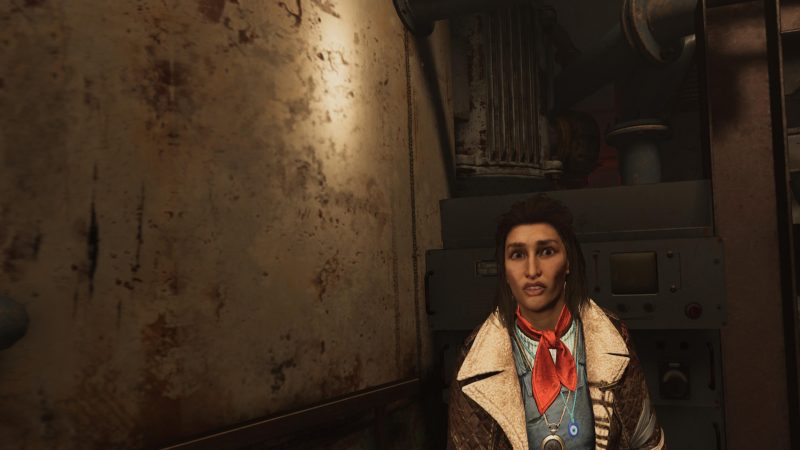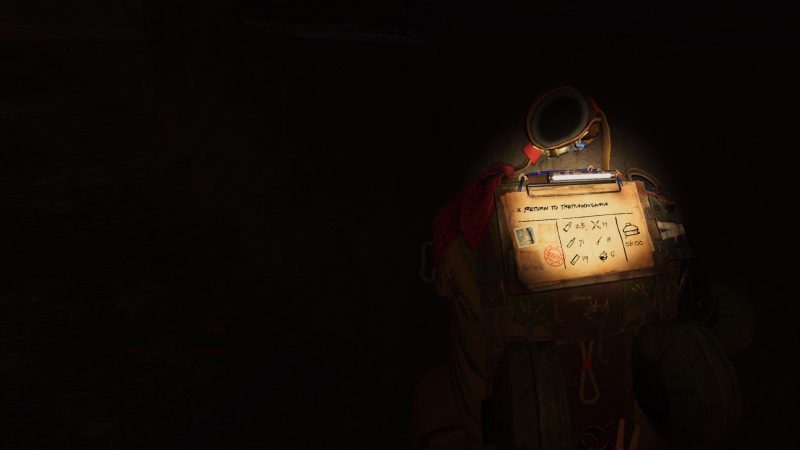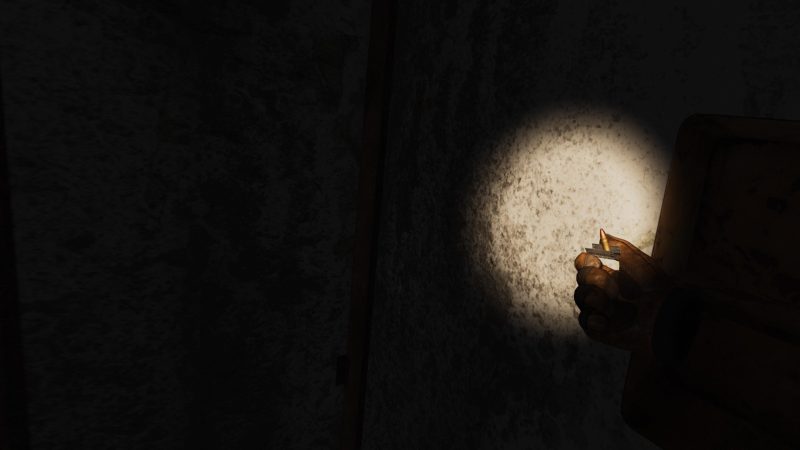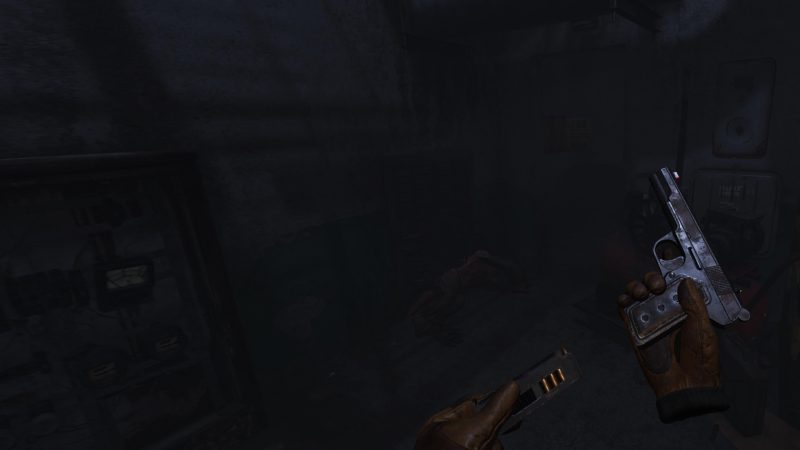Metro Awakening VR Review (PSVR2) – There was a time in my life when if you’d asked me what was the best game I had played on VR, my answer would’ve been the VR version of Resident Evil 4 Remake.
When I started playing Metro Awakening VR, I started to think that maybe there was a new number one. There are plenty of reasons in favour of that being the case.
Vertigo Games and Deep Silver kick things off in a very strong way, and you feel like you’ve been shot straight down into the deep end of what Awakening will be like in its prologue.
As I delved further though, I soon discovered just how much deeper, and darker, Awakening goes. It gets under your skin in eerie ways, and if I’m being totally honest some of those ways did make me dread playing at all.
But that truth only shows its class as a horror game. Metro Awakening is rich with atmosphere, strong performances, and tight gameplay that makes it one of the best survival horror games in the genre.
There are also reasons in favour of it falling short, and they ultimately did pull down my experience in Metro Awakening just below my adoration of RE4.
The thing is though, almost being as great to play as a game like Resident Evil 4 still makes Metro Awakening a great game.
Metro Awakening VR Review (PSVR2) – Close, But No Serdar
What We Do For Love
I won’t get into too many details about Metro Awakening’s story. There’s so much about this experience that hinges on you really uncovering the mystery of it all on your own, and Metro Awakening does an excellent job of teasing your curiosities from the beginning.
The basic lines of it are that you step into the virtual shoes and gloves of Serdar, a doctor doing what he can to survive the nuclear apocalypse by living underground in Moscow’s Metro system, which was also conveniently made to be the world’s largest nuclear shelter.
That doesn’t mean its by any means a safe place to live. Radiated and mutated creatures have created a new food chain, and humans are surviving as much as they can in the dark, cold tunnels.
At least Serdar has his wife, Yana. Well, until she runs off into the metro system, unarmed and under the belief that she can hear her dead son calling to her.
She’s also off her medication – medication that Serdar prescribed that she doesn’t like to take. And medication that he braved the metro to try and re-acquire, without telling her.
So after going on an escapade to try and get his wife medication that he thinks she needs, that she doesn’t like, the risk Serdar took dis-regulates her further, and sends her hurdling towards a potentially fatal end.
All in all, classic husbanding for horror-story-husbands who now have to face the worst terrors imaginable to find their wives.
Jokes aside, that kick-off sends Serdar hurling into what is probably the most terrifying horror experience I’ve had in VR, maybe even in horror games overall.
A huge credit to that is just how good the sound design is at all times. With or without music, Metro Awakening makes every moment you’re walking through the tunnels and stations of the old metro system feel tense.
Then there’s also the excellent voice acting from everyone in the cast that really elevates the story when its big narrative beats do come.
With everything really starting on a high note, it’s unfortunate that by the time you’re nearing credits the story has lost its luster. It’s not that I minded a more supernatural slant by the end, there were just much more interesting supernatural story threads it could’ve followed than the one it ultimately chose.
That doesn’t mean taking the journey isn’t worth it though, because no matter where you fall on the story, you’re still treated to some of the best VR horror experiences gaming has to offer.
Survival Is Scary
I’m a fan of horror. I enjoy a scary and/or spooky time, so in my time I’ve read, watched, and played plenty of horror books, TV shows/movies and video games. And like any horror fan, I’ve become desensitized to a lot. My exception to that rule however is spiders, but I’ll talk about how that impacted my experience a bit later.
My point is that I enjoy a lot of horror but as many veterans attest to, it becomes increasingly difficult to find something to read, watch or play that’s actually scary – a proper terrifying and fun time.
Metro Awakening VR is proper scary, in fact it almost makes me giddy thinking about how good it is at being scary. I’ve already mentioned the sound design, which is excellent, but there are two more key elements to why it’s a scary good time.
The lighting, and the survival mechanics. Save for an earlier section of the game, you’re never really close to the surface. The whole journey takes place in the dark, and you spend a considerable amount of time trying to restore power in the various places you visit to try and turn on the lights.
You also have a head lamp, which you can turn on and off, but you also need to keep it charged, a feat made possible by this portable wheel-spinning electricity-charging phenomena you keep on your backpack.
With its mostly man-made setting, the lighting team was at an advantage in how it could position lights at every turn, and set the stage whenever you walked into a new section. It’s consistently clear they took that advantage and ran with it, because for a game so en-wrapped in darkness, Metro Awakening’s lighting design is constantly impressive, further adding to terror and pressure to survive you feel.
And you feel that pressure. In fact your head lamp is the prime example for how the lighting and environmental design elements weave into the survival mechanics. You can’t keep your head lamp on all the time, so you’ll need to charge it – and you don’t want to be caught doing that when you can hear something moving in the dark around you.
So you need to pick your spots to charge it, and even use it, conserving the energy for the longer stretches where you won’t get a second to pull out your charging device.
On top of that, Metro Awakening adds more environmental hazards that you’ll need to efficiently use your limited resources for to raise the stakes even further.
Like how there are still pockets of radiation in the tunnels you’ll need to mask-up for, and the crude filters laying around will only serve you for so long before the radiation eats them (and then you) apart.
Your watch keeps track of how long your filters will each last you, and with them only lasting a few minutes at a time you’ll need to keep an eye on it.
All this culminates in sections where you need to make sure your main and best source of light is good to go, and you’re watching the clock on how much longer you can breathe, and you’re trying to fend off radiated monsters trying to rip off your face. While trying to not waste any time or bullets.
It’s incredibly thrilling when everything is firing on all cylinders, and that’s before getting into how tight the gunplay and stealth combat is.
Count Your Bullets
Metro Awakening definitely leans more on the ‘horror’ side of its ‘action-horror’ dynamic, but that’s not to say the action half of it is a slog. If you’ve played either or the Arizona Sunshine titles, you’ll already know how good Vertigo is at making gunplay feel seamless in VR.
That stays true in Metro Awakening, in fact I’d argue the guns feel better here than in Arizona Sunshine. Though only because with the limited arsenal available, it feels like Vertigo spent plenty of time making the five core weapons you use feel tactile and powerful to use.
Add the fact that you’ll only ever have access to just enough ammo to survive, and every shot you fire starts to feel like the difference between life and death. That made finding even one bullet, as you’ll often do, feel like a big deal.
By contrast, the few times you’re strapped behind a standing machine gun with seemingly endless ammo feels like a fun treat to kick the action up a notch, even if it was repetitive.
I really loved how the gunplay tied into the survival mechanics, as scavenging for ammo meant you’d pick up enemy weapons, take out the mag and see with your own eyes if there was anything left to take. You have to pull out your backpack if you want to actually see the number of bullets you have left.
Your two backpacks also make up your main UI when playing, as a wonderfully immersive menu system that’s all incorporated to make sense within the logic of the game world. There are no virtual menu screens popping up to tell you how many bullets are left, or how long you could last with your gas mask on, based on the filters you have left.
It just feels really cool to do that all by your own eye, looking at notes Serdar wrote. It adds a significant layer to the survival feeling properly immersive, which in turn makes the threats around you feel more real, and turns up the dial on the horror.
The one area of combat and gunplay I felt let down by however was the stealth. Using the crossbow for stealthier kills at range, or trying to sneak up and melee enemies is all fun enough, but the stealth sections just aren’t nearly as engaging as the rest of the combat.
Metro Awakening’s stealth sections aren’t bad, per se – they’re just out-shined by other combat encounters. I actually felt like I wanted more direct combat encounters with the other humans surviving in the tunnels.
Thanks to solid gunplay, those more traditional fire fights feel great, and I especially loved tackling them strategically to preserve my own resources. Like picking up my fallen enemies rifle and just using that until it’s out of ammo – rather than trying to quickly scavenge the bullets remaining in the magazine, and reload my own weapon.
The immersive interactivity of the gunplay and combat, with weapons that feel intricate and great to use really up-the-ante for just how much more immersed and engaged I felt while playing.
Almost My New Number One
Metro Awakening might not be my new number-one VR game, but it’s a really strong number two. When it’s good, it’s really good, but that also makes its rougher edges all the more disappointing
I also have to talk about the spiders in the game, because there are far too many for my liking. But I’m also someone who would probably self-diagnose themselves as having arachnophobia, or at least as someone who is deeply disturbed by spiders.
If you’re similar in that regard, then I’d say to play Metro Awakening at your own peril. Having spiders jump at my face, hearing what sounds like them crawling around on my body, and getting the odd surprise scare of pulling out my backpack only to find a spider on my hand was truly too much for me and made those sections really, really difficult to play through.
Honestly the spiders are what made me dread playing through the whole thing more than any of the other scares on offer in Metro Awakening. But that’s a personal slight, and to my chagrin, they’re so embedded in the game, it wouldn’t be a simple thing for Vertigo to add an arachnophobia mode, so I don’t expect Metro Awakening will ever have one.
Where I think it’s more fair to say Metro Awakening doesn’t reach its full potential is the fact that the story loses its steam in the final chapters, the stealth sections are underwhelming and the lack of enemy variety did make combat encounters feel one-note well before the end.
Even without sticking the landing and some less-savoury bits sprinkled across its runtime, Metro Awakening is a great survival horror game and easily one of the best experiences to be had on PS VR2.
If you like horror games and have already put the investment into a modern VR headset like the PS VR2, then do not sleep on Metro Awakening VR. It’s not to be missed if you have the ability to play it.
Metro Awakening VR is available for PS5 and PS VR2 on November 7, 2024.
Review code generously provided by the publisher.











